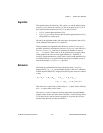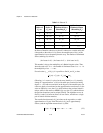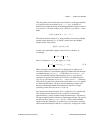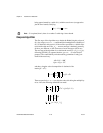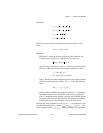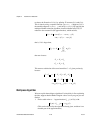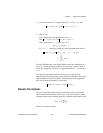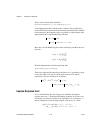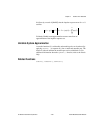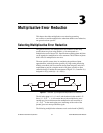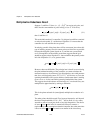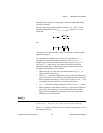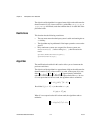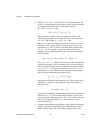
Chapter 2 Additive Error Reduction
Xmath Model Reduction Module 2-22 ni.com
We use sysZ to denote G(z) and define:
bilinsys=makepoly([-1,a]/makepoly([1,a])
as the mapping from the z-domain to the s-domain. The specification is
reversed because this function uses backward polynomial rotation. Hankel
norm reduction is then applied to H(s), to generate, a stable reduced order
approximation H
r
(s) and unstable H
u
(s) such that:
Here, the s
ni
are the Hankel singular values of both G(z) and H(s); they are
the same:
We then implement the s-domain equivalent with:
sysS=subsys(sysZ,bilinsys)
There is no simple rule for choosing α; the choice α = 1 is probably as good
as any. The orders of G
r
and G
u
are the same as those of H
r
and H
u
,
respectively. The error formulas are as follows:
Impulse Response Error
If G
r
is determined by the first (single-pass) algorithm, the impulse
response error (for t > 0) between the impulse responses of G and G
r
can
be bounded. As shown in Corollary 9.9 of [Glo84], if G
r
is of degree i –1
and the multiplicity of the ith larger singular value σ
i
of G is r, then:
HH
r
H
u
–– σ
i
=
HH
r
– σ
i
σ
n
i
1+
... σ
ns
+++=
G
r
z() H
r
α
z 1–
z 1+
-----------
=
G
u
z() H
u
α
z 1–
z 1+
-----------
=
Ge
jω
()G
r
e
jω
()– G
u
e
jω
()–
∞
σ
n
i
=
Ge
jω
()G
r
e
jω
()–
∞
σ
n
i
σ
n
i
1+
...σ
ns
++≤
σ
j
GG
r
–[]σ
i
G for j≤ 1 2 ... 2i 2 r+–,, ,=
σ
ji– 1+
G()for j≤ 2i 1– r ...,ns i 1–+,+=




